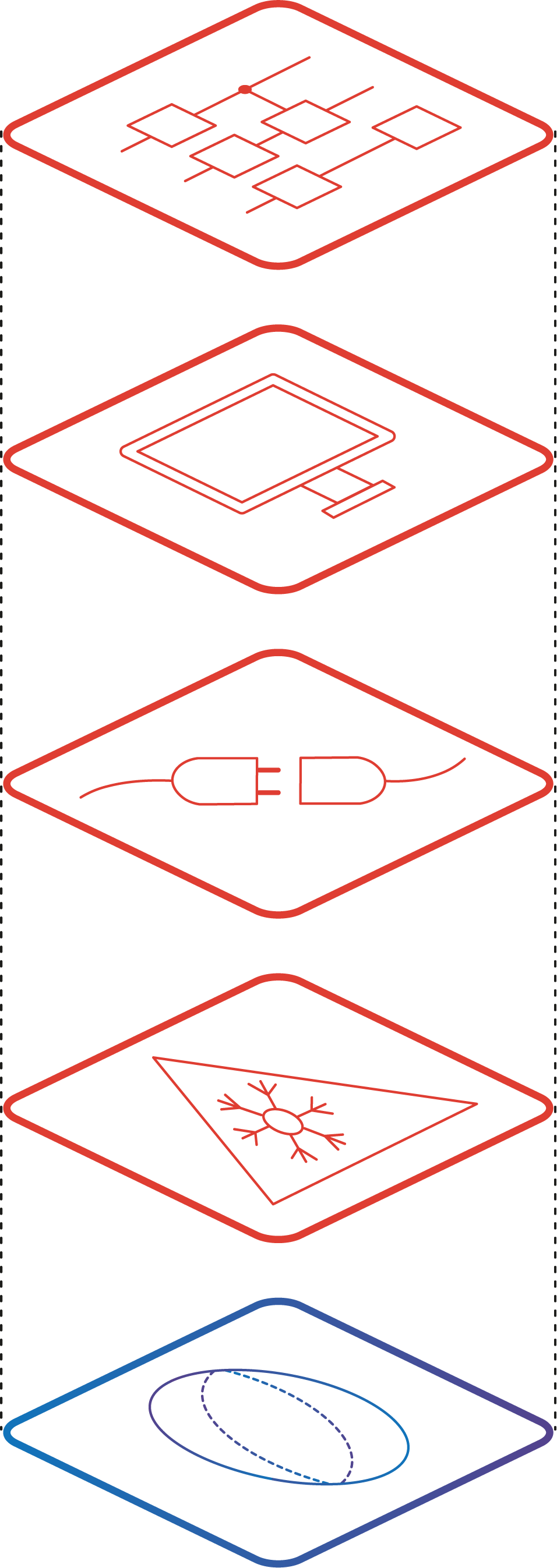Software and control
From algorithms to refrigeration, it takes a full stack of components to make a quantum computer.
Although the quantum chip with qubits is what gives a quantum computer its amazing power and properties, it is a very small part of the actual computer. In fact, a quantum computer is mostly made out of “ordinary” classical electronics, which we need to give commands to the quantum chip and read out the results. This complete quantum computer package is often referred to as a full stack quantum computer, and it consists of 5 levels.
1. Applications and algorithms
First, we need to convert our idea for an algorithm into the algorithm itself. We translate our idea of how we can magnify the amplitude of the correct solution, and destroy the amplitude of the wrong solutions onto a concrete sequence of actions which are called quantum gates. These gates can, for example, create a superposition (like the Hadamard [H] gate) or flip a qubit from “0” to “1” (like the X gate). These algorithms can be viewed as the language we speak when instructing a quantum computer what to do.
2. Software
Next, we need to communicate our algorithm to the quantum computer. This is done by expressing it in a quantum programming language on an ordinary computer. Many manufacturers have developed their own programming frame-works, such as Braket, Q# , Qiskit or Forest. Because not all quantum computer users will be experienced programmers, most frameworks offer an interface in which you can simply drag and drop your quantum algorithm – very similar to how you do that on your laptop or PC when you want to let it do a computation but you do not know how to code. The framework itself then handles all the low-level coding, such as communicating with electronics. This will also be where you can retrieve the results of your computation, once it is done.
3. Electronics
Each operation that we perform in our algorithm corresponds to a physical signal going to the qubits. A whole tower of electronics is responsible for sending the correct signals to certain qubits at the right times.
4. Refrigerator and wires
High temperatures can destroy quantum information. For many qubit types, it is therefore essential to keep our qubits at low temperatures – near absolute zero, which is about -273oC. This is why quantum chips are placed inside enormous refrigerators. However, the qubits do need to be connected to the outside world in order to receive our commands and send back their results. A single qubit can already require multiple wires for this – imagine how crammed it would be with thousands or even millions of qubits. This is why a lot of research is going into looking at more efficient ways of sending information over as few wires as possible.
5. Quantum device / processor
This is where the magic happens: when we have programmed our algorithm, the qubits in the quantum processor will do the computations. There exist many different types of quantum chips, discussed earlier in the magazine.
